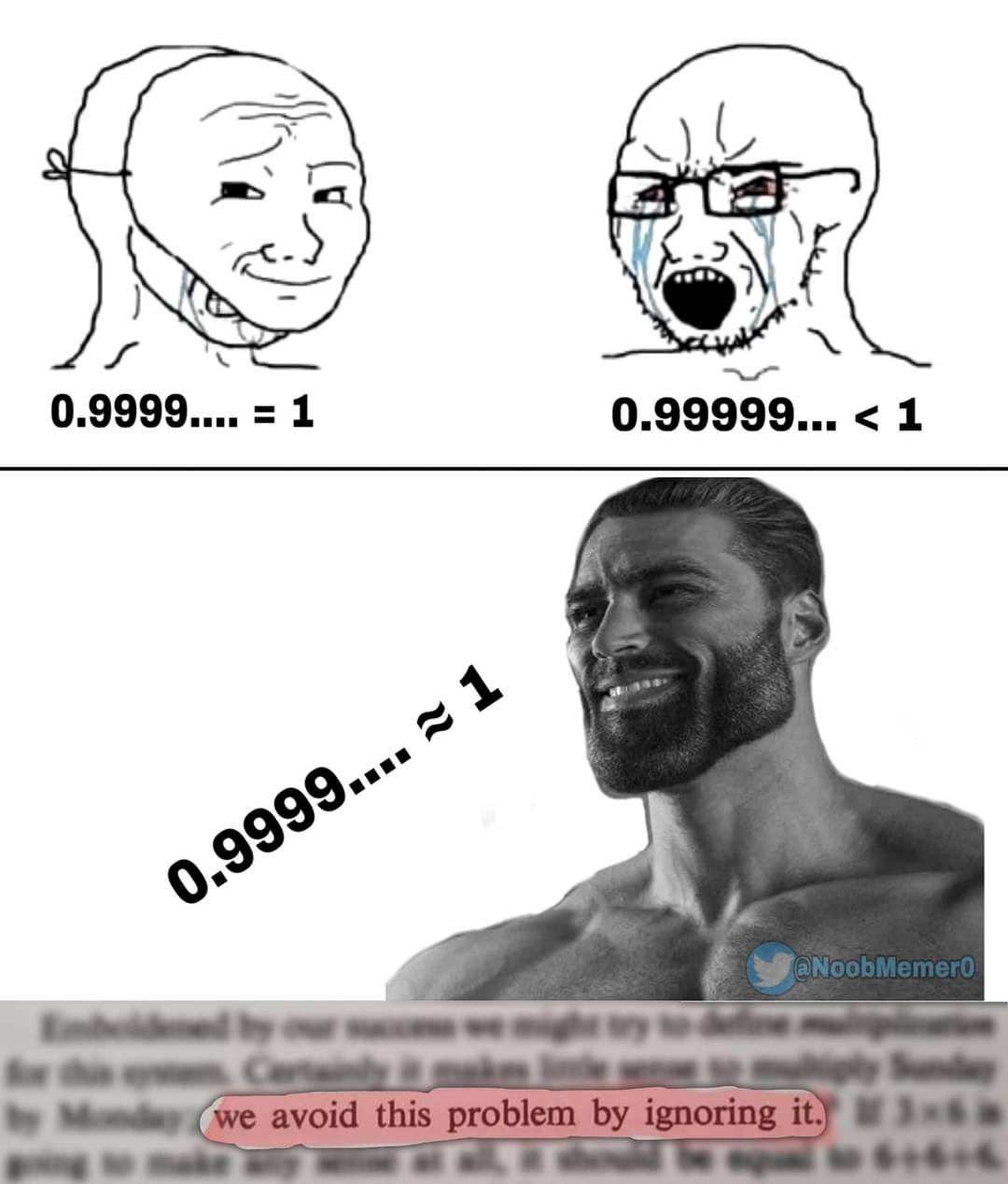this post was submitted on 27 Jun 2024
816 points (95.2% liked)
Science Memes
11068 readers
2859 users here now
Welcome to c/science_memes @ Mander.xyz!
A place for majestic STEMLORD peacocking, as well as memes about the realities of working in a lab.

Rules
- Don't throw mud. Behave like an intellectual and remember the human.
- Keep it rooted (on topic).
- No spam.
- Infographics welcome, get schooled.
This is a science community. We use the Dawkins definition of meme.
Research Committee
Other Mander Communities
Science and Research
Biology and Life Sciences
- [email protected]
- [email protected]
- [email protected]
- [email protected]
- [email protected]
- [email protected]
- [email protected]
- [email protected]
- [email protected]
- [email protected]
- [email protected]
- [email protected]
- [email protected]
- [email protected]
- [email protected]
- [email protected]
- [email protected]
- [email protected]
- [email protected]
- [email protected]
- [email protected]
- [email protected]
- [email protected]
- [email protected]
- !reptiles and [email protected]
Physical Sciences
- [email protected]
- [email protected]
- [email protected]
- [email protected]
- [email protected]
- [email protected]
- [email protected]
- [email protected]
- [email protected]
Humanities and Social Sciences
Practical and Applied Sciences
- !exercise-and [email protected]
- [email protected]
- !self [email protected]
- [email protected]
- [email protected]
- [email protected]
Memes
Miscellaneous
founded 2 years ago
MODERATORS
you are viewing a single comment's thread
view the rest of the comments
view the rest of the comments

That's is a very precise and very good answer, but im still at a loss as to how all the .9,.99,.999,.9999 eventually just becomes 1.
They don't eventually become 1. Their limit is 1 but none of the terms themselves are 1.
A sequence, its terms and its limit (if it has one) are all different things. The notation 0.999... represents a limit of a particular sequence, not the sequence itself nor the individual terms of the sequence.
For example the sequence 1, 1/2, 1/3, 1/4, ... has terms that get closer and closer to 0, but no term of this sequence is 0 itself.
Look at this graph. If you graph the sequence I just mentioned above and connect each dot you will get the graph shown in this picture (ignoring the portion to the left of x=1).
As you go further and further out along this graph in the positive x direction, the curve that is shown gets closer and closer to the x-axis (where y=0). In a sense the curve is approaching the value y=0. For this curve we could certainly use wordings like "the value the curve approaches" and it would be pretty clear to me and you that we don't mean the values of the curve itself. This is the kind of intuition that we are trying to formalize when we talk about limits (though this example is with a curve rather than a sequence).
Our sequence 0.9, 0.99, 0.999, ... is increasing towards 1 in a similar manner. The notation 0.999... represents the (limit) value this sequence is increasing towards rather than the individual terms of the sequence essentially.
I have been trying to dodge the actual formal definition of the limit of a sequence this whole time since it's sort of technical. If you want you can check it out here though (note that implicitly in this link the sequence terms and limit values should all be real numbers).